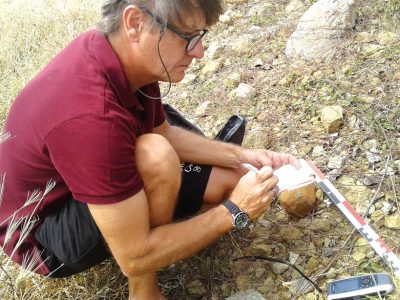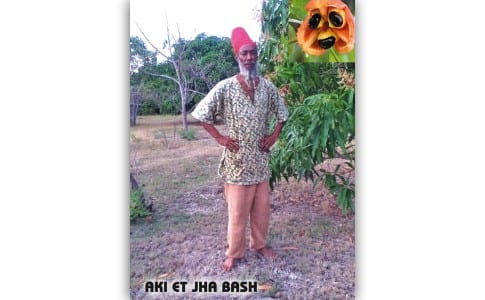Hurricane Irma strongly impacted the islands of Saint-Barthélemy and Saint-Martin. The wind gusts measured at 295 km / h and the cyclonic tide generated a devastating swell which caused the submersion of many coastal areas of the island, causing severe erosion.
Endowed with this internal competence, the Collectivity of Saint-Martin was able to carry out, in 2017 and 2018, an inventory and a diagnosis of the impact of the passage of the hurricane on the archaeological heritage of Saint-Martin.
The inventory of the archaeological sites of Saint-Martin, carried out in 1999 *, indicated the presence of many sites established along the coast. From September 21, 2017, a few days after Irma, a first contact was made by Christophe Hénocq, in charge of Archeology and Scientific missions within the Community, with the Regional Service of Archeology (SRA) in order to put in place places a survey on the entire coastal border. Authorized by decree SRA-2017-094 and SRA-2108-077 of the prefecture of Guadeloupe, the prospecting “Post-IRMA Saint-Martin 2017” covered the entire coastline of the territory of the community.
The prospecting took place along the erosion slope generated by the swell along the coast of the French part. 70 km of coast have been covered from Lucas Bay in the east to Baie Longue in the west. 36 sites or site indices were observed, including 18 unpublished archaeological deposits.
The factors that led to the partial destruction of the sites are not limited to the action of the swell. The public works of clearing carried out in emergency, the temporary storage of waste, the opening of dune cords allowing to evacuate the water stored in the ponds, the private works of security of the residences built by the sea, also affected certain archaeological sites.
Among the known sites impacted, 7 correspond to Meso-Indian occupations, 8 to Neo-Indian occupations and 4 to vestiges from the colonial era.
Among the new sites observed during this prospecting, 3 correspond to Meso-Indian occupations, 7 to Neo-Indian and 8 to vestiges from the colonial era.
Begun on October 24, 2017, prospecting is still in progress, particularly on the islets. A first report was submitted to the President and the Director General of the Community services on September 21, 2018, with a copy to the SRA. On February 12, President Gibbs and Acting DGS Romain Perreau received Christophe Henocq to give an update on the challenges of this prospecting. A synthesis of the data observed in the field should make it possible to set up protective measures in collaboration with the Regional Service of Archeology, in order to avoid the irremediable loss of the coastal archaeological sites of the Collectivity of Saint-Martin.
President Gibbs commended this scientific work done by the community; these data will be taken into account in future developments.
>> Simplified island timeline Of Saint-Martin
•Pre-Columbian period
3000 BC AD - 100 AD. J.-C., Meso-Indian
400 BC AD - 960 AD. J.-C., Ancient Neo-Indian
660 AD AD - 1600 AD. J.-C., New Indian
• Colonial period
1493 – 1627, Precolonial period, 2nd voyage of C. Colomb, then Flibustiers
1627 – 1648, First Franco-Dutch settlers
1648 – 1764, Indigo and cotton crops started
1764 – 1848, Agriculture and sugar industry
1848 – 1930, Emancipation and decline of agricultural production
1930 – 1960, End of salt mining
• Contemporary period
1960 – 1985, Starting the tourism economy
1985 – 2018, Abandonment of agriculture in favor of tourism, strong urbanization.
* In 1999, the inventory of the archaeological sites of the French part of the island of Saint-Martin was carried out by P. Stouvenot and C. Hénocq. Cf Report archived at the regional service of Archeology of Guadeloupe (SRA), Basse-Terre, Guadeloupe.
7,066 total views











No comments